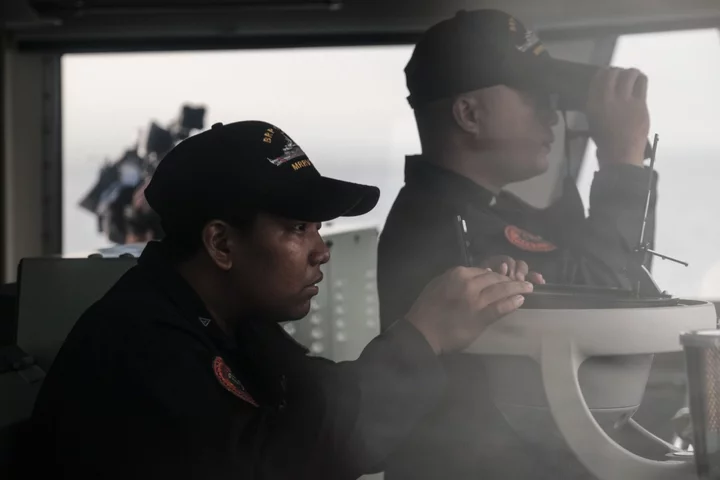The Philippines is stepping up efforts to make sure people around the world can see for themselves what it says are “aggressive” acts by Chinese ships in the South China Sea in a bid to pressure Beijing to change its ways.
The Southeast Asian nation has released videos and images of at least eight incidents involving Chinese vessels so far this year, often via social media — including a mission this week to resupply an outpost that the Philippines said China at one point tried to block.
That compares to around three similar releases during the six-year presidency of Rodrigo Duterte, according to Philippine coast guard spokesman Commodore Jay Tarriela. The government of Duterte — who fostered better ties with Beijing and set aside a 2016 international court ruling affirming his country’s sea claims — tended to prefer releasing written protests.
See: Philippines, Australia Conduct Joint Drills Near Disputed Sea
“We are becoming more loud in telling the world that we need to expose China’s bullying behavior,” Tarriela said in an interview in Manila on Wednesday. By pursuing that tactic, Manila hopes “countries like the US and those in the European Union would unite and tell them what you’re doing is wrong, it’s illegal,” he said.
The strategy underscores the lengths the Philippines has to go in its persistent confrontation with China, which has the world’s largest navy by number of vessels and claims most of the South China Sea despite the protests of other nations in the region.
In January, Philippine President Ferdinand Marcos Jr. raised the issue with Chinese leader Xi Jinping during a visit to Beijing, prompting the two sides to establish a link for diplomats to discuss maritime issues. A month later the two nations were again bickering, this time over a Chinese ship aiming a military-grade laser at a Philippine vessel in the South China Sea.
After that incident, the Philippines released images of a Chinese coast guard vessel pointing the bright green beam at the Philippine ship. The device, which can be used to aim weapons, caused “temporary blindness” to crew, the Philippines said at the time.
There are some signs the more visual strategy is changing China’s behavior at sea, said Tarriela, who pointed to this week’s delivery of supplies to the rusty warship serving as a military post in the Second Thomas Shoal.
The success of that mission stands in contrast to one that China thwarted earlier this month. Afterward, officials from the Philippine coast guard, military and Foreign Affairs Department held a rare public briefing to display photos and videos of Chinese coast guard ships firing water cannons toward its supply vessel.
China’s actions were later criticized by the the Pentagon, Japan and Australia, which this week held a joint military exercise with the Philippines near the South China Sea.
More: Why Marcos Is Inviting the US Back to the Philippines: QuickTake
Tarriela said Chinese ship captains have changed some of their tactics since the Philippines stepped up its release of videos. They’re now tailing Manila’s vessels from a greater distance than before and leaving areas after realizing their actions are being recorded.
After the Philippines conducted the resupply mission, China’s coast guard said it made “temporary special arrangements” to allow it to proceed. China’s Defense Ministry didn’t immediately respond to a request for comment on Thursday.
“When it comes to international relations, anything that you publicize has a reputational cost for China, hits a nerve with the Chinese,” said Tarriela.
--With assistance from Jing Li.
Author: Andreo Calonzo, Clarissa Batino and Manolo Serapio Jr.

